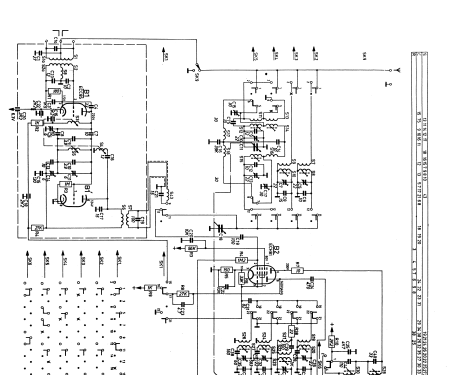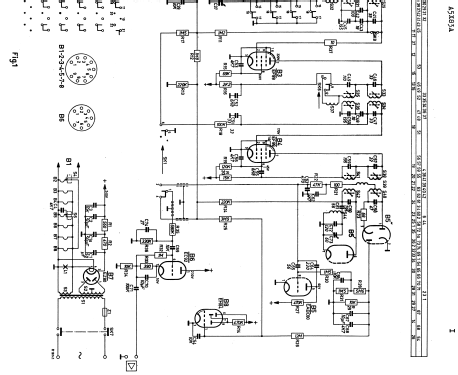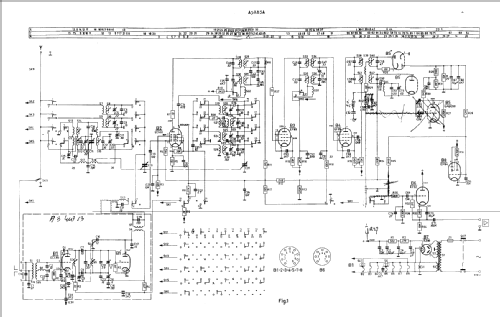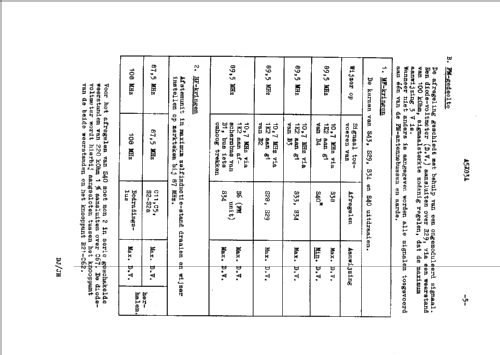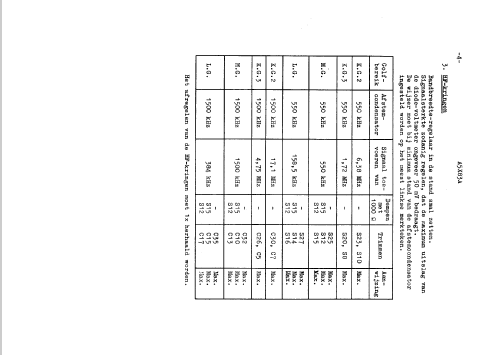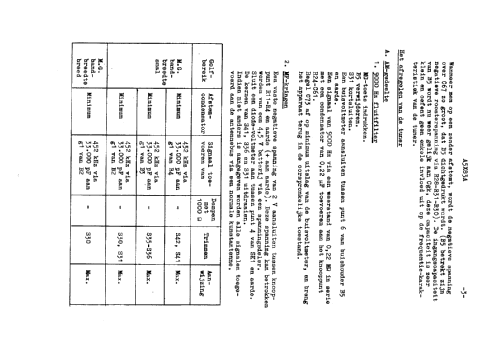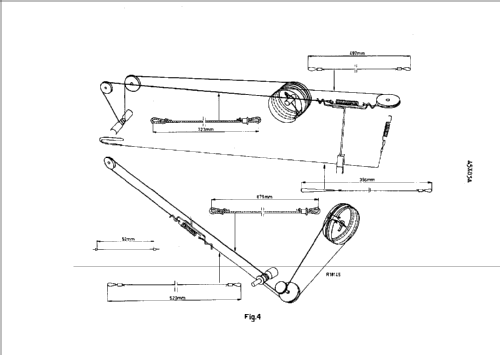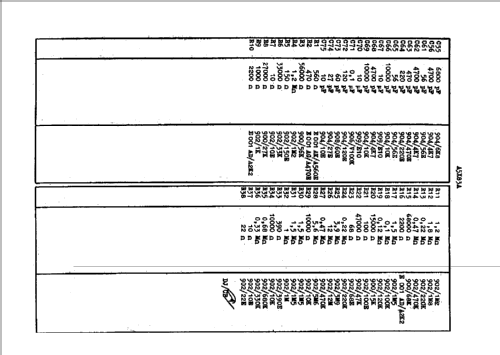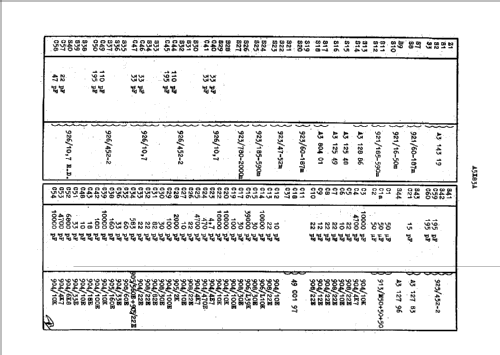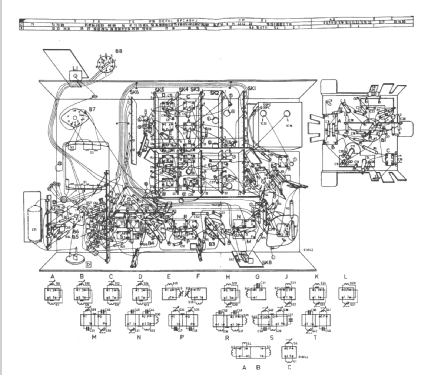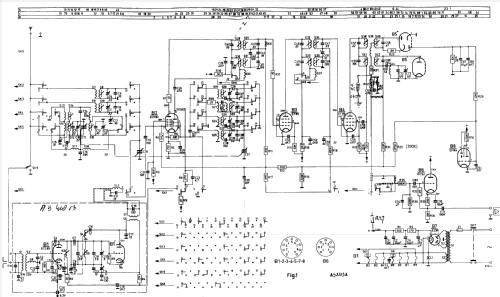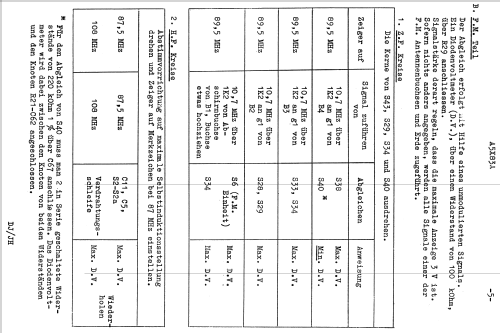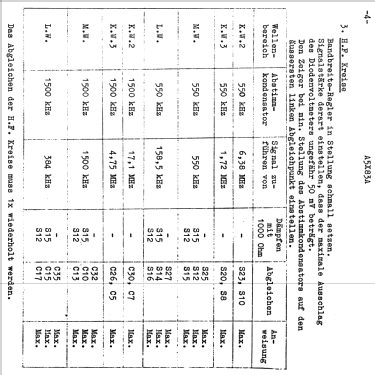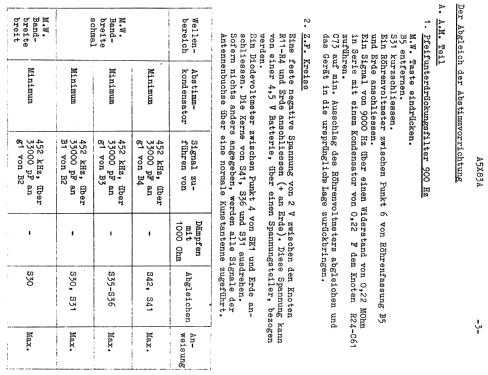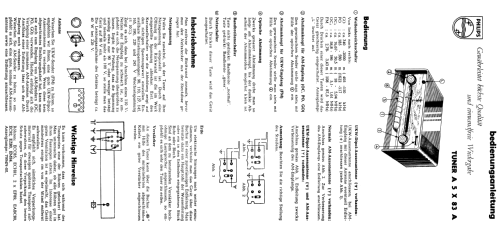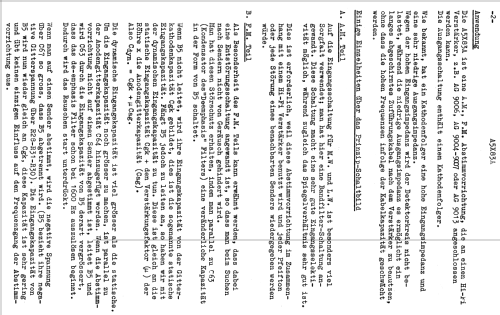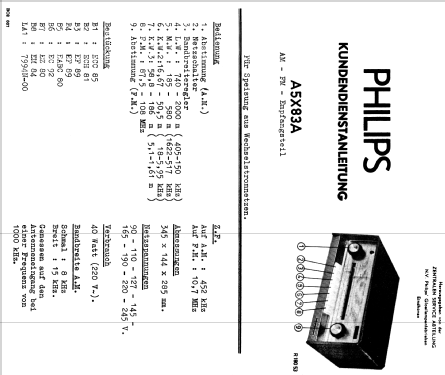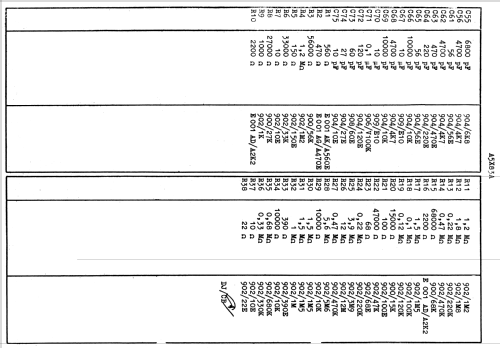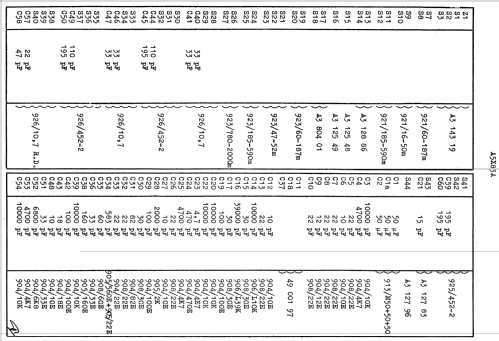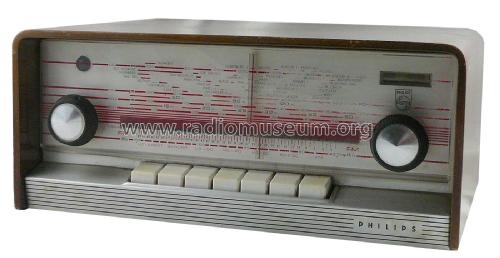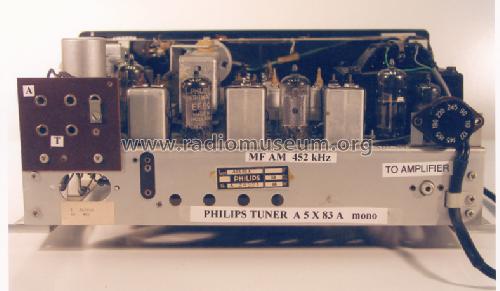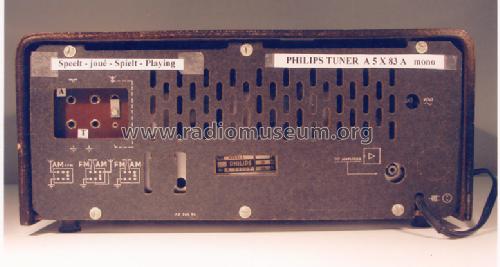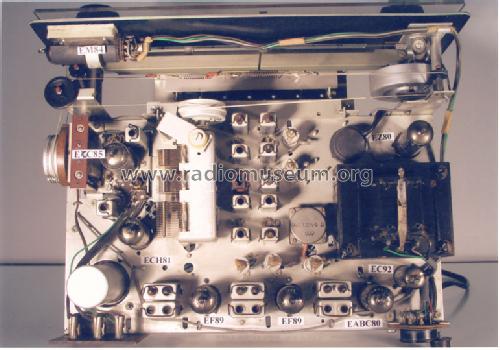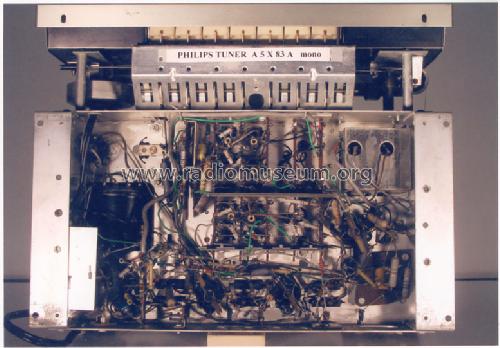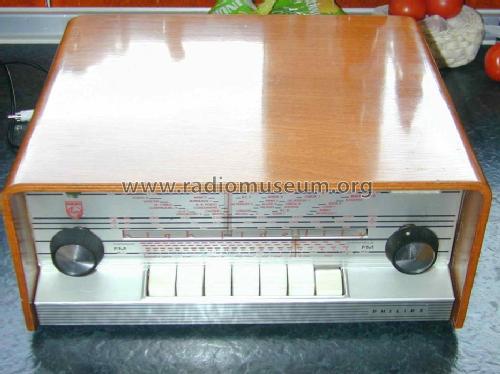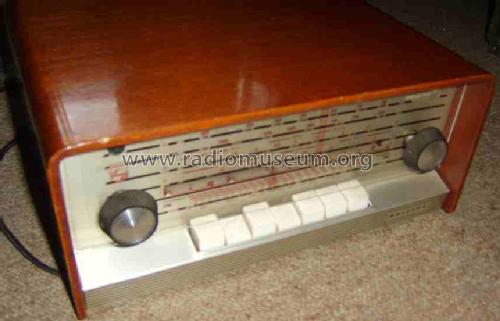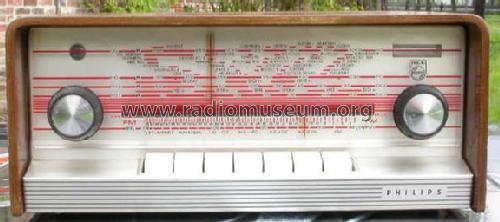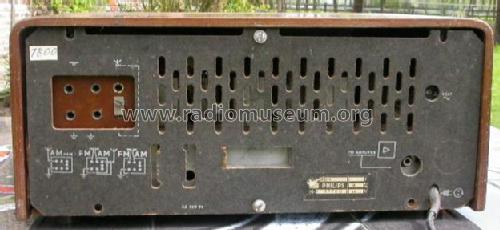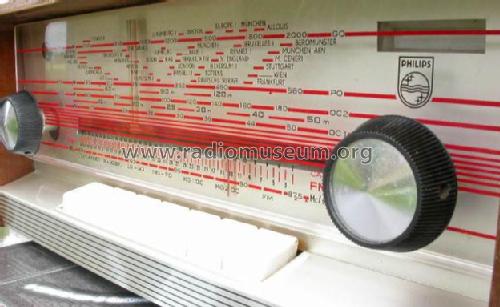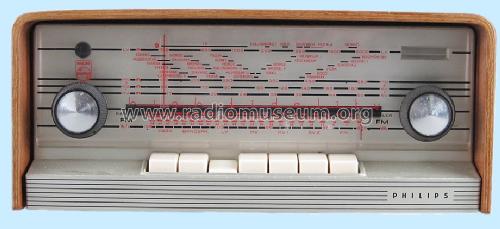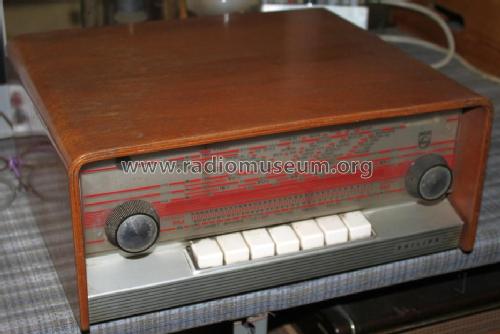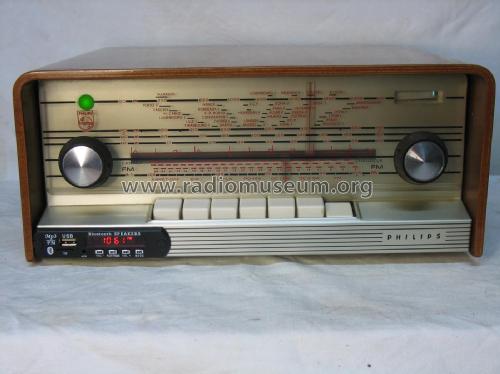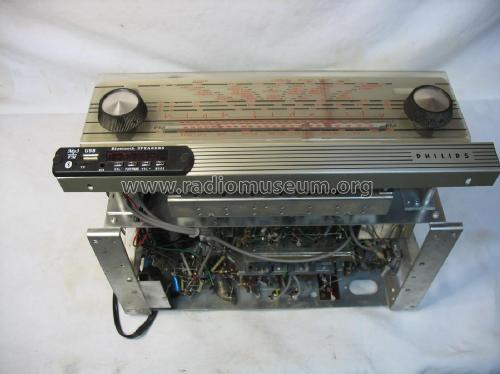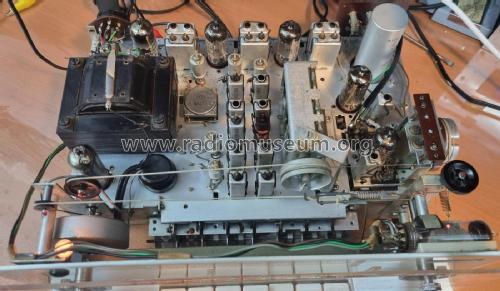- País
- Holanda
- Fabricante / Marca
- Philips; Eindhoven (tubes international!); Miniwatt
- Año
- 1958–1963
- Categoría
- Radio - o Sintonizador pasado WW2
- Radiomuseum.org ID
- 29591
Haga clic en la miniatura esquemática para solicitarlo como documento gratuito.
- Numero de valvulas
- 8
- Principio principal
- Superheterodino en general; ZF/IF 452/10700 kHz
- Número de circuitos sintonía
- 9 Circuíto(s) AM 11 Circuíto(s) FM
- Gama de ondas
- OM, OL, 2 x OC y FM
- Tensión de funcionamiento
- Red: Corriente alterna (CA, Inglés = AC) / 90; 110; 127; 145; 165; 190; 220; 245 Volt
- Altavoz
- - Este modelo usa amplificador externo de B.F.
- Material
- Madera
- de Radiomuseum.org
- Modelo: A5X83A - Philips; Eindhoven tubes
- Forma
- Unidad para estanteria.
- Ancho, altura, profundidad
- 345 x 144 x 285 mm / 13.6 x 5.7 x 11.2 inch
- Anotaciones
- Tuner, mono. Gehäuse (ohne Boden) bestehend aus 7 Schichten Sperrholz, Dicke 7 mm. KW 1: 16 bis 50 m, KW 2: 58 bis 186 m.
To use with amplifier Philips model AG9013.
- Peso neto
- 6.1 kg / 13 lb 7 oz (13.436 lb)
- Precio durante el primer año
- 499.00 DM
- Procedencia de los datos
- Handbuch VDRG 1962/1963
- Mencionado en
- -- Original prospect or advert
- Autor
- Modelo creado por Iven Müller. Ver en "Modificar Ficha" los participantes posteriores.
- Otros modelos
-
Donde encontrará 5278 modelos, 4426 con imágenes y 3461 con esquemas.
Ir al listado general de Philips; Eindhoven (tubes international!); Miniwatt
Colecciones
El modelo es parte de las colecciones de los siguientes miembros.
Contribuciones en el Foro acerca de este modelo: Philips; Eindhoven: A5X83A
Hilos: 1 | Mensajes: 2
My model was extremely dirty when purchased, so I decided to clean the dial scale with water containing a drop of dishwashing liquid. This turned out to be a bad mistake because the paint used was water soluble!
I scanned the remainder (what was left) of the scale and spent quite a few hours producing a new scale on the computer.
My next mistake was to print the image on "iron on" transparency, which ruined the original plastic.
Eventually, I used a new piece of perspex and used a "stick on transparency" printed on an ink-jet printer.
Another foolish mistake meant I had to rewind an AM if transformer. Happily, my tuner is working well in spite of its mistreatment.
Bryce Ringwood, 07.Jul.08
